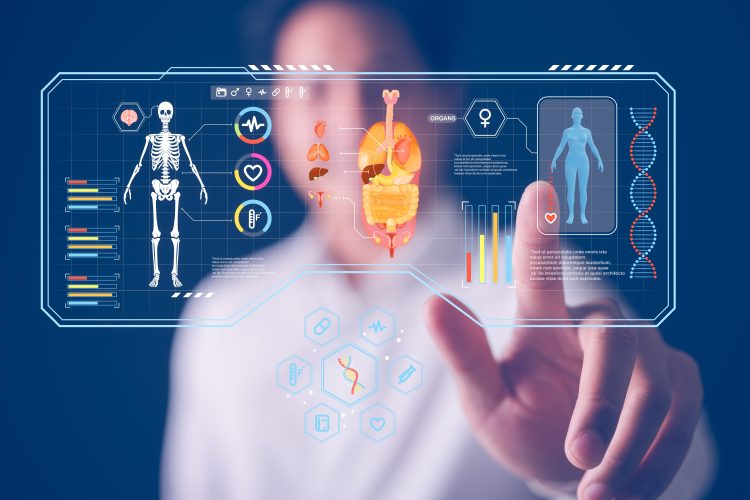AI meets human tissue to fast-track precision medicine development
Posted: 8 September 2025 | Drug Target Review | No comments yet
By combining human tissue models with explainable AI, researchers can analyse complex patient data to identify which treatments work best for which patients. First applied to inflammatory bowel disease, this approach could improve clinical trial success rates across many diseases.


A collaboration between REPROCELL, IBM and the STFC Hartree Centre has created an AI-powered platform that combines human tissue models with machine learning (ML) to streamline clinical trials, cut costs and accelerate the delivery of new medicines.
Delivered through the Hartree National Centre for Digital Innovation (HNCDI), the project is helping shape the future of precision medicine by tackling one of drug development’s biggest challenges – predicting individual patient responses to treatments. We spoke with Graeme Macluskie of REPROCELL, Dave Braines of IBM, and Dan Clayton and Ruby George of the STFC Hartree Centre to learn how this collaboration is bringing together artificial intelligence and human tissue-based models to make drug development faster, more targeted and more successful.
Decoding complex patient data
Precision medicine relies on understanding why individuals react differently to the same therapy. These differences can come from sources such as genetics, lifestyle and environmental factors – creating datasets too large for traditional analysis. Graeme Macluskie, Director of Precision Medicine at REPROCELL, explained why AI was the logical solution.
Automation now plays a central role in discovery. From self-driving laboratories to real-time bioprocessing
This report explores how data-driven systems improve reproducibility, speed decisions and make scale achievable across research and development.
Inside the report:
- Advance discovery through miniaturised, high-throughput and animal-free systems
- Integrate AI, robotics and analytics to speed decision-making
- Streamline cell therapy and bioprocess QC for scale and compliance
- And more!
This report unlocks perspectives that show how automation is changing the scale and quality of discovery. The result is faster insight, stronger data and better science – access your free copy today
“Understanding the underlying reasons why individual patients can respond differently to drug treatments is really the ultimate goal that underpins effective precision medicine,” he said. “Finding trends within these vast datasets is obviously a huge challenge. It was something that we thought (and have since shown) that AI/ML could help with.”
The AI platform, known as Pharmacology-AI, does not replace scientists but enhances their ability to detect patterns. Dave Braines, IBM’s technical lead on the project, highlighted its role as a decision-support tool.
“For me, the key value of platforms like Pharmacology-AI lies not in generating definitive answers or making decisions, but in accelerating and augmenting human expertise,” he noted. “Their true potential is in significantly boosting the efficiency of experts – within this domain and beyond.”
One of the most important aspects about this project was to make the machine learning outputs interpretable.
Dan Clayton, Research Software Engineer at the Hartree Centre, added that interpretability was just as crucial as predictive power. “One of the most important aspects about this project was to make the machine learning outputs interpretable,” he said. “If we had a model that could accurately predict a person’s drug response but not give us any insight as to how it got there, it would not be of any use for clinical trial design.”
Ruby George, also a Research Software Engineer at the Hartree Centre, worked on the project’s dashboard – the key interface for end users. “From a software engineering perspective, the main challenge was minimising latency when loading the various graphs on the dashboard,” she said. “Because these visualisations came from high-volume data, we had to optimise both backend data access and frontend rendering to ensure a smooth, responsive user experience.”
Leveraging human tissue models
At the centre is REPROCELL’s human fresh tissue models – which preserve the biological complexity of real patient samples. These models allow researchers to simulate drug effects before clinical trials, generating data that is both reliable and highly relevant.
“Human fresh tissue models utilise tissue residual from surgical procedures or non-transplantable organs and allow the effects of drug treatments to be measured in a laboratory environment,” explained Macluskie. “Data from these assays is extremely valuable and is really the only way to generate the depth of data necessary for most precision medicine applications, prior to the clinic.”
The project tackled a complex and multi-dimensional problem space and the final solution reflected a high level of technical rigour and thoughtful design.
To integrate these models with AI, the project adopted an agile development approach and close collaboration across all partners.
“The project tackled a complex and multi-dimensional problem space and the final solution reflected a high level of technical rigour and thoughtful design,” said Braines. “Each conversation and demonstration laid the groundwork for further enhancements and a truly robust outcome.”
Clayton emphasised the importance of usability, ensuring that even non-technical staff could interpret and act on the data.
“We worked on integrating clinical metadata to ensure that the visualisations in the platform are easy to use, even for non-technical staff and ensure that the ML outputs are explainable,” he said.
Expanding the impact
The platform was initially applied to inflammatory bowel disease (IBD) but has potential to be used for other conditions. By using high-quality patient data, it could be adapted to a wide range of therapeutic areas.
“The overarching concept of this project and the Pharmacology-AI technology is broadly applicable to any disease area,” said Macluskie. “Currently, our primary focus is IBD, but we are assessing the market demand and clinical need for other clinical and preclinical applications.”
Braines believes this technology will become an indispensable part of research and development across the life sciences.
“By surfacing patterns, insights, or detailed correlations, platforms like this can act as powerful allies to human experts – delivering greater speed, depth and clarity,” he said.
Transforming drug development
By identifying optimal patient profiles early, the platform could reduce costly trial failures and speed up drug approval.
“Improving the attrition rate of Phase II and Phase III clinical trials by 10 percent has the potential to reduce the average capitalised cost of getting a drug to market by hundreds of millions of dollars,” Macluskie explained.
The collaboration between REPROCELL, IBM and the STFC Hartree Centre demonstrates how the combination of advanced technologies and domain expertise can develop the future of healthcare. By combining human tissue models with the analytical power of AI, the team has created a platform that streamlines drug discovery and improves patient outcomes.
As this technology evolves, it promises to expand into new disease areas, find hidden insights within complex datasets and ultimately bring more effective treatments to patients faster.
“With thoughtful oversight, we see vast potential for applying this approach across a broad range of R&D scenarios – and this is just one of them,” concluded Braines.
Meet the experts
Ruby George, Research Software Engineer, STFC Hartree Centre:


Graeme Macluskie, Director of Precision Medicine, REPROCELL:


Graeme is Director of Precision Medicine at REPROCELL Europe, a life sciences company headquartered in Glasgow, focused on providing services and products for stem cell and human tissue-based drug discovery. A highly experienced industrial scientist with over 20 years’ experience in designing and delivering preclinical projects for Pharmaceutical and Biotech customers, Graeme joined Biopta, which was later acquired by REPROCELL, in 2011. In his 14 years at REPROCELL, Graeme has overseen the introduction of a range of novel and commercially successful human tissue-based inflammation models of psoriasis, inflammatory bowel disease (IBD) and chronic obstructive pulmonary disease (COPD). In his current role as Director of Precision Medicine, Graeme is responsible for building the commercial and scientific operations of the REPROCELL Precision Medicine business unit.
Stephen Checkley, Senior Research Software Engineer, STFC Hartree Centre:


Stephen Checkley was originally a microbiologist working at Unilever on various antimicrobial screening projects. Later, he completed a PhD in systems biology at the University of Manchester where he began integrating mathematical modelling and simulation with his life sciences background. Stephen worked at AstraZeneca as a computational biologist and later in various contract research organisations building quantitative systems pharmacology models for oncology drug development, as well as machine learning and data science. More recently, he has moved into the field of research software engineering at STFC’s Hartree Centre, deploying data engineering pipelines and LLM serving platforms on high performance computing clusters.
Dave Braines, CTO for Emerging Technology, IBM:


Dr Dave Braines is CTO for Emerging Technology, IBM Research UK, a Fellow of the British Computer Society and an active member of the AI Alliance. His research is in the field of Artificial Intelligence and he works alongside colleagues from the Science and Technology Facilities Council (STFC) as part on the Hartree National Centre for Digital Innovation (HNCDI). In this role he leads a team of IBM Researchers focused on AI simulation investigating how these techniques can support accelerated scientific discovery. He has published over 100 collaborative conference and journal papers in the field of AI. Dave is passionate about human-machine cognitive interfaces and has developed techniques to support interactions between human users and machine agents.
Ciaron Howell, Research Software Engineer, STFC Hartree Centre


Ciaron Howell has a Computer Science degree from the University of Liverpool and has worked in industrial automation, delivering laboratory robotics to a number of companies such as Unilever, Roche, and AstraZeneca. After joining the Research Software Engineer team at the Hartree Centre in 2021, he has specialised in DevOps and backend development across a number of domains including automative, space, and life sciences. Looking to the future, Ciaron is exploring his interests in LLMOps, pipeline orchestration, and Retrieval-Augmented Generation applications.
Dan Clayton, Research Software Engineer, STFC Hartree Centre


Dan Clayton is a Research Software Engineer at the STFC Hartree Centre, where he bridges the gap between cutting-edge research and real-world applications. He specialises in transforming new technologies and proof-of-concepts into practical software – from machine learning platforms to data visualisations that organizations can actually implement and scale. His projects have spanned sectors from healthcare and mining to heritage science, helping clients adopt new technologies for long-term innovation. Dan has a master’s degree in physics from the University of Liverpool.
Related topics
Analysis, Analytical Techniques, Artificial Intelligence, Assays, Big Data, Clinical Trials, Drug Development, Drug Discovery, Machine learning, Precision Medicine, Translational Science
Related organisations
IBM, ReproCELL, STFC Hartree Centre








